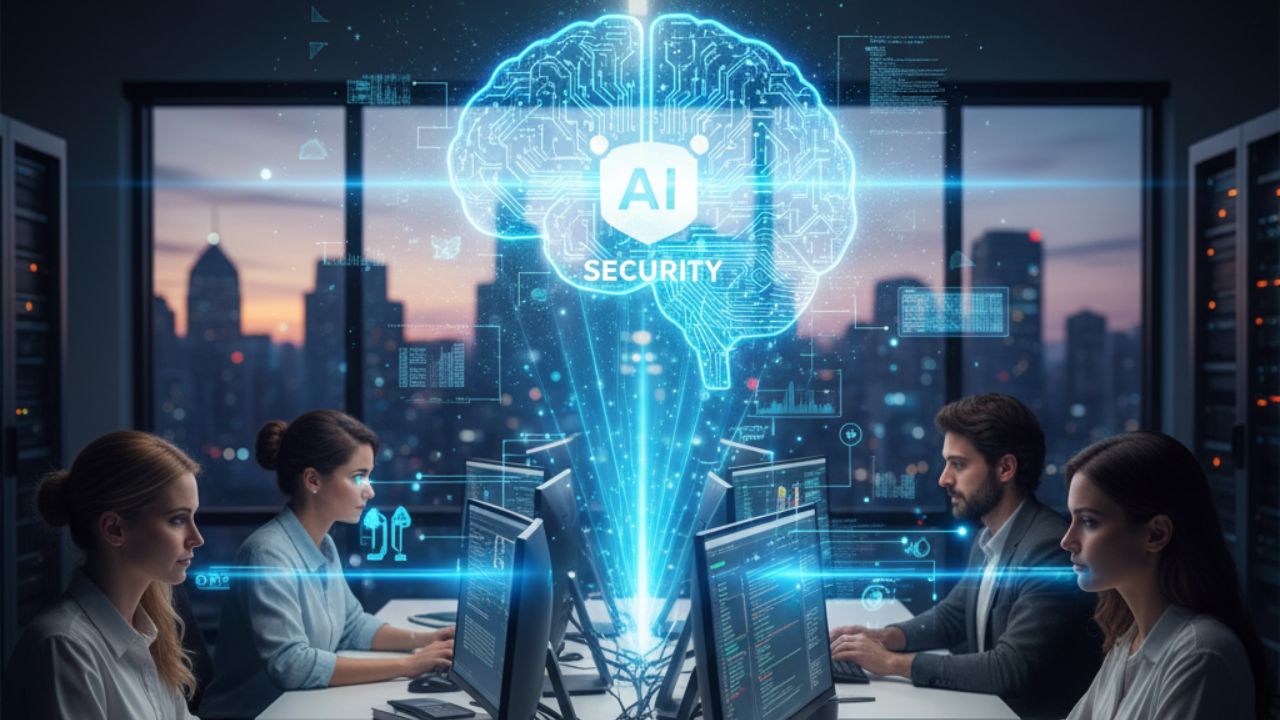
AI security training equips developers to build safer software and machine learning systems. It strengthens coding, model hardening, secure deployment, and risk awareness. Teams with trained developers ship faster, prevent attacks, and maintain trust making AI security skills a career booster in today’s AI-driven world.
Developers write the code that runs everything apps, websites, cloud systems, and now AI models. But one weak line can open a door to attacks. As artificial intelligence grows, so do the risks tied to it. Models get poisoned, data leaks during training, or outputs trick users into harm. Regular security training helps, but AI-specific security training takes it further. It arms developers with skills to build safe, smart systems from the start. This article explains what AI security training covers, why it matters, and how it levels up a developer’s toolkit. We’ll keep it clear like guiding a junior coder through a new project.
The Rising Need for AI-Savvy Security
AI is everywhere. Chatbots handle support. Algorithms predict sales. Self-driving tech reads roads. But these systems are new attack targets.
Common threats include:
- Data poisoning – Bad input during training skews results.
- Model theft – Someone copies your trained AI.
- Prompt injection – Users trick chatbots into wrong actions.
- Adversarial examples – Tiny image changes fool vision models.
Old security focused on networks or logins. AI security guards the model, data, and outputs. Developers who know both code and AI threats build safer products. Companies like OpenAI and Google now demand this mix. Without it, a single flaw can cost millions or damage trust.
What AI Security Training Actually Teaches
Good training isn’t just slides on risks. It’s hands-on, like coding bootcamps but for defense.
1. Secure Data Handling
Developers learn to clean and protect training data. Tools like differential privacy add noise so individual records stay hidden. They practice splitting datasets train, validate, test to avoid leaks.
2. Model Hardening
Code exercises show how to make models resist attacks. Add checks for weird inputs. Use techniques like adversarial training feed fake attacks during learning so the model learns to ignore them.
3. Safe Deployment
Learn to wrap models in secure APIs. Rate-limit requests. Log inputs and outputs without storing sensitive text. Set up canary tokens fake data that triggers alerts if stolen.
4. Ethical AI Checks
Spot bias in outputs. Write rules to block harmful responses. Test for fairness across groups age, gender, region.
5. Incident Response for AI
Simulate a poisoned model. Trace the bad data. Roll back to a clean version. Automate recovery with version control for models, not just code.
Courses use real tools TensorFlow Privacy, PyTorch, Hugging Face safetensors. Labs run in safe sandboxes. You break a model, then fix it. That sticks.
Read Also: How AI Security Certifications Can Boost Your Cybersecurity Skills
How It Boosts Core Developer Skills
AI security training doesn’t replace coding it upgrades it.
Better Code Quality
You start writing defensive code by habit. Validate every input. Sanitize outputs. Catch edge cases early. This cuts bugs, not just attacks.
Deeper System Thinking
AI forces you to see the full pipeline data in, model, output, user. You design with end-to-end safety. That mindset improves any app, AI or not.
Stronger Debugging
Track why a model gave a wrong answer. Trace data flow. Use explainability tools to open the black box. These skills help debug normal code faster too.
Collaboration Muscle
Security needs devs, data scientists, and ops to talk. Training includes team exercises red team (attack) vs blue team (defend). You learn clear communication under pressure.
Future-Proof Resume
AI security is hot. Job posts for “Secure AI Engineer” or “ML Security Specialist” grow fast. Certified devs earn 20–30% more. Even general roles value the edge.
Real-World Impact: Stories from the Field
A fintech startup trained its team on prompt injection. One dev added input filters to their chatbot. Three months later, attackers tried tricking it into revealing account data. The system blocked it. No breach. Same team now ships faster security is baked in, not bolted on.
A healthcare firm used model hardening labs. Their X-ray AI kept misreading manipulated images in tests. After training, they added noise resistance. Accuracy held under attack. Regulators praised the robustness.
An e-commerce giant ran bias detection workshops. Devs found their recommendation engine favored one region. They fixed the data split. Sales balanced, and customer trust rose.
These aren’t rare wins. Teams with AI security skills ship safer, faster, and smarter.
How to Get Started with AI Security Training
You don’t need a PhD. Start small.
Free Resources
- Google’s Secure AI Framework – Free guide with checklists.
- OWASP Top 10 for LLMs – Quick read on model risks.
- Hugging Face Safety Course – Hands-on Jupyter notebooks.
Paid Courses
- Coursera: AI Security by DeepLearning.AI – 6 weeks, code labs.
- SANS SEC560: AI Security – Deep dive, enterprise focus.
- NVIDIA Deep Learning Institute – GPU-based defense labs.
Hands-On Practice
- Join CTFs like DAWG CTF (AI track).
- Use Adversarial Robustness Toolbox – Free Python library.
- Build a safe chatbot with Guardrails AI.
- Modern Security IO: AI Security Certification course.
Team Tips
- Run monthly “attack days” – One hour to break your own model.
- Pair devs with security peers for reviews.
- Track metrics: attack success rate, response time, bias score.
Challenges and How to Beat Them
Time is tight. Solution: 2-hour micro-lessons, not week-long courses.
Math feels hard. Focus: Most training is code, not equations. Tools handle the heavy lifting.
Cost worries. Many free labs work. Companies often fund certs pitch it as risk reduction.
Read Also: Why an AI Security Certification Could Be Your Career Game-Changer
Quick Skill Impact Table
| Skill Area | Before Training | After Training |
|---|---|---|
| Input Validation | Basic checks | AI-specific filters |
| Debugging | Stack traces | Model + data tracing |
| Risk Awareness | General web threats | Poisoning, inversion, bias |
| Deployment Speed | Security slows release | Security in CI/CD |
| Job Options | Standard dev roles | AI security specialist |
The Bigger Picture
AI isn’t a side feature it’s the future of software. Secure AI isn’t optional. Regulators like EU AI Act now grade systems by risk. High-risk AI health, finance, hiring must prove safety. Developers who know this win contracts, avoid fines, and sleep better.
Start now, and in six months you’re not just coding you’re defending. Your apps don’t just work. They withstand.
Final Takeaway
AI security training turns good developers into great ones. You write tighter code, think broader, and build trust. It’s not extra work it’s smarter work.
One secure model can save a company. One skilled dev can secure many.
Pick a course. Break a model. Fix it. Repeat.
That’s how you don’t just keep up you lead.
FAQs On AI Security Training
It’s hands-on training that teaches developers to secure AI models, data, and outputs against attacks like data poisoning, model theft, and adversarial examples.
Developers learn input validation, model hardening, secure deployment, and debugging techniques that apply to both AI and traditional applications.
Yes. Roles like AI Security Engineer or ML Security Specialist are growing, and certified developers can earn 20–30% more.
Absolutely. Most courses focus on practical, code-based labs rather than heavy math, making them accessible for developers at all levels.


